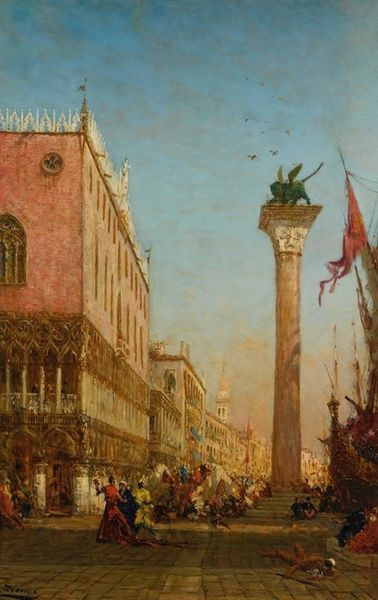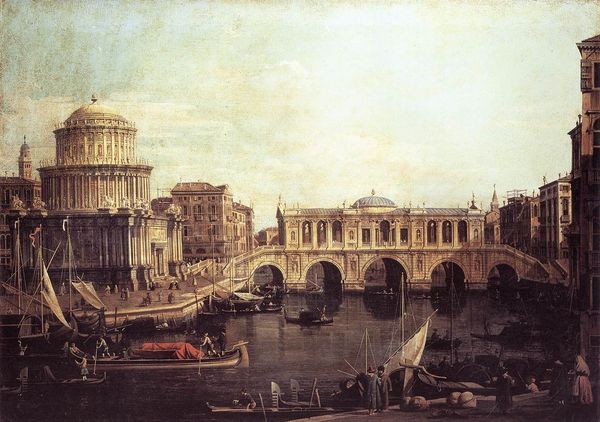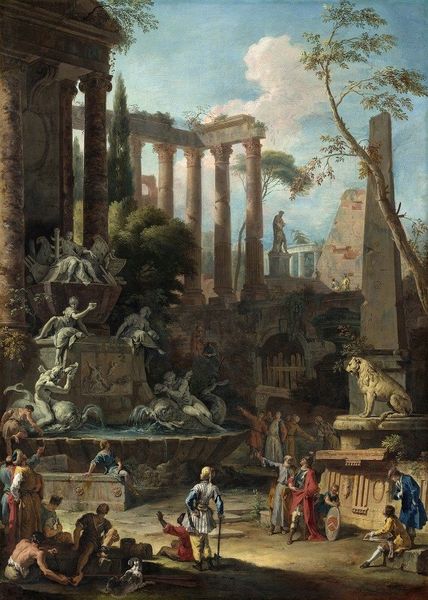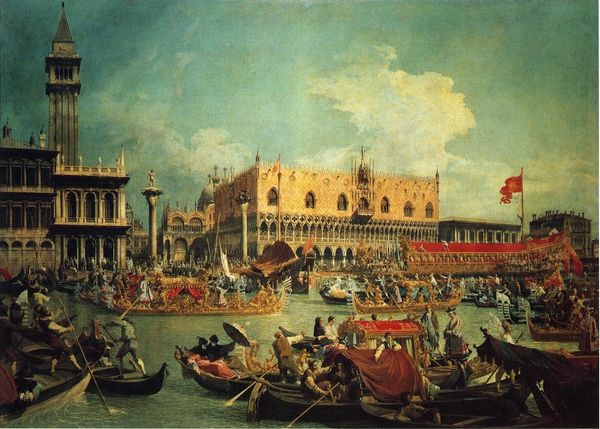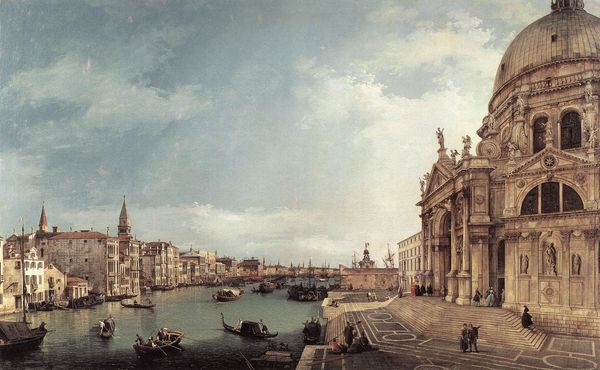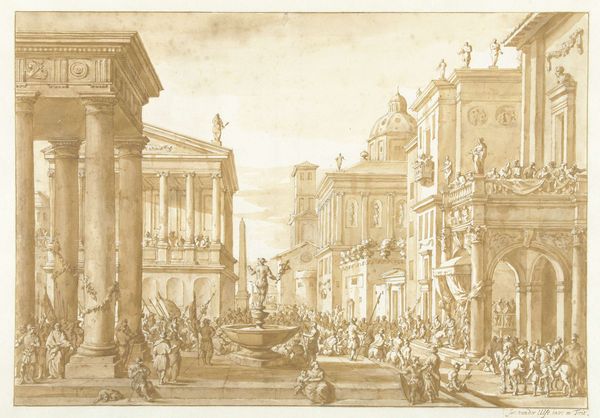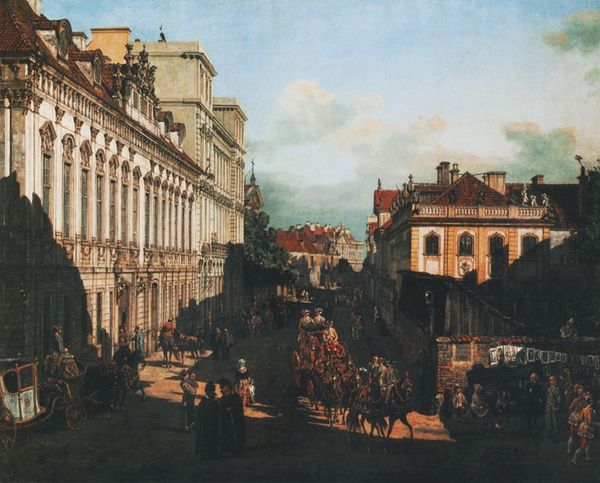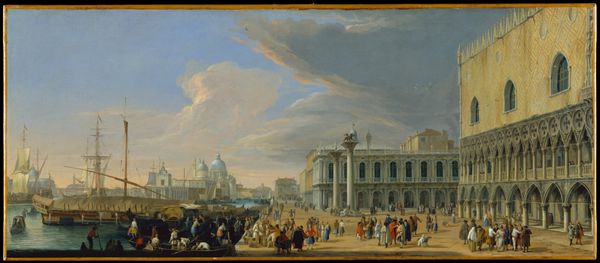
The destruction of the tree of liberty in Largo di Palazzo 1800
0:00
0:00
saveriodellagatta
Private Collection
watercolor
#
portrait
#
neoclassicism
#
landscape
#
urban cityscape
#
oil painting
#
watercolor
#
cityscape
#
history-painting
#
watercolor
Copyright: Public domain
Editor: So, this is Saverio della Gatta's "The Destruction of the Tree of Liberty in Largo di Palazzo," from 1800. It’s a watercolor and it looks like a pretty charged scene, a city square in upheaval. There is a strong sense of propaganda, yet what really intrigues me is that focus on an effigy rather than human suffering. What can you tell me about this piece? Curator: Well, consider the materiality of watercolor itself in this context. It is portable and relatively inexpensive. Its use here suggests not necessarily a monumental artwork intended for posterity, but perhaps something more immediate – intended for rapid dissemination. This challenges conventional ideas around history painting that are mostly done with oil. What purpose did this kind of readily reproducible image serve, do you think, given the historical events? Editor: Possibly to get a point across, or to generate quick income, if sold as a print perhaps? So, what would that say about Della Gatta’s process and intent? Curator: Precisely! Think about the labor involved not only in its creation but also its potential multiplication. Della Gatta, by using watercolor, positions himself as a producer operating outside the sphere of elite patronage. He created an accessible commentary through a specific mode of making art and reaching a new audience in a revolutionary period. Is it Neoclassicism promoting reaction rather than revolution? Editor: Interesting perspective! Looking closely, the architecture looks a bit too perfect to depict reality. I'm now thinking of how Della Gatta manipulated reality for political means. Curator: The way he utilized easily sourced and handled materials allowed the image to circulate rapidly. Watercolors might have been more swiftly realized and distributed, offering Della Gatta a crucial medium through which he engaged in this moment. What conclusions can you make regarding Neoclassicism in that moment in time? Editor: This shift makes me consider the politics of production and accessibility itself as an integral part of interpreting art! Thanks for your time. Curator: Indeed. Thinking about the social and material circumstances of artistic production gives us invaluable insight.
Comments
No comments
Be the first to comment and join the conversation on the ultimate creative platform.
